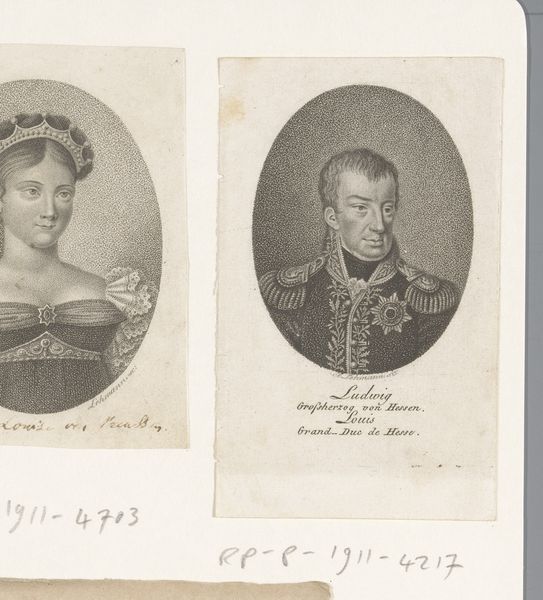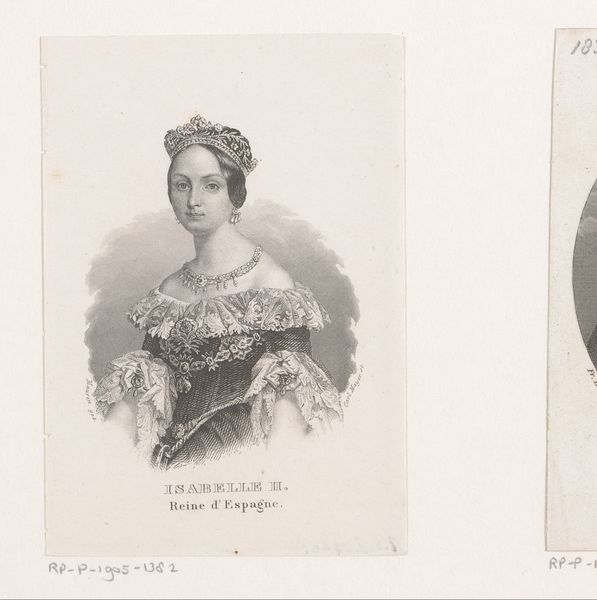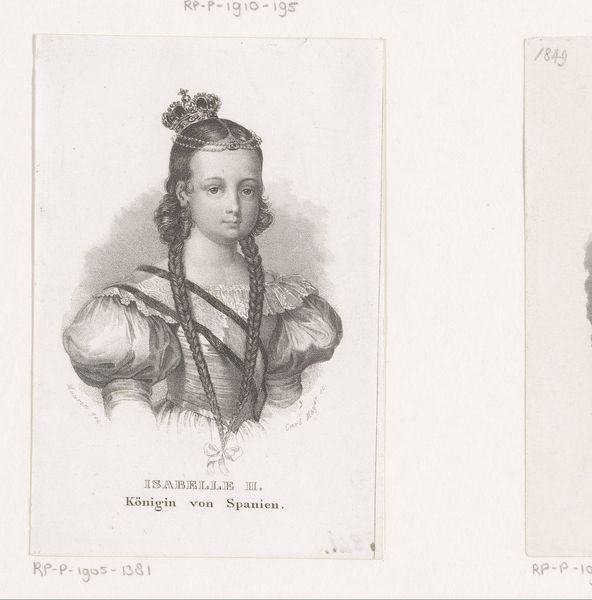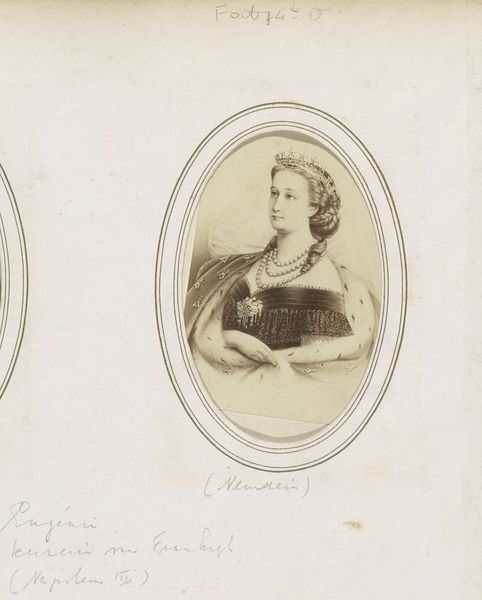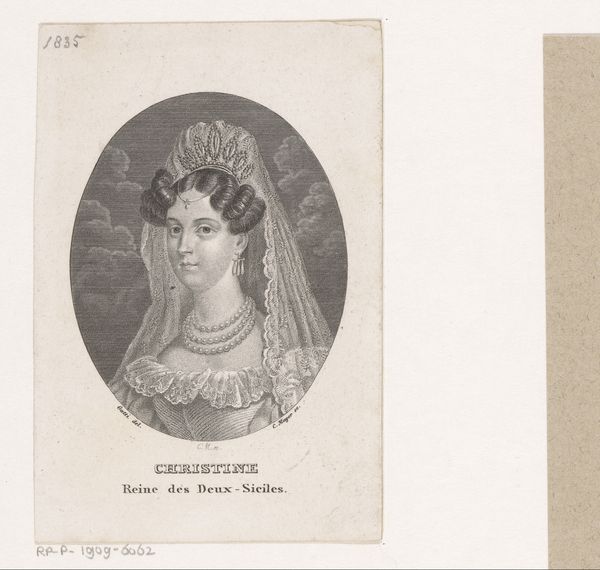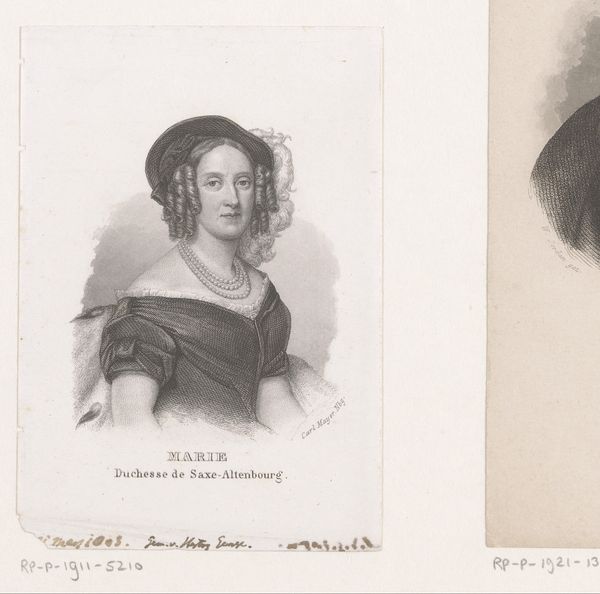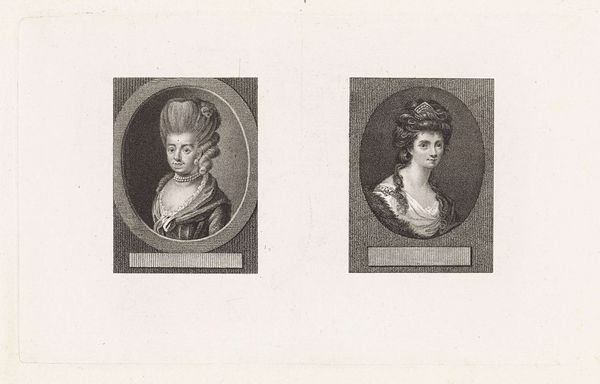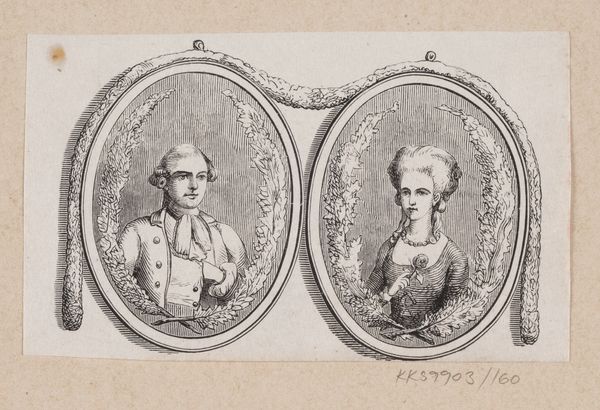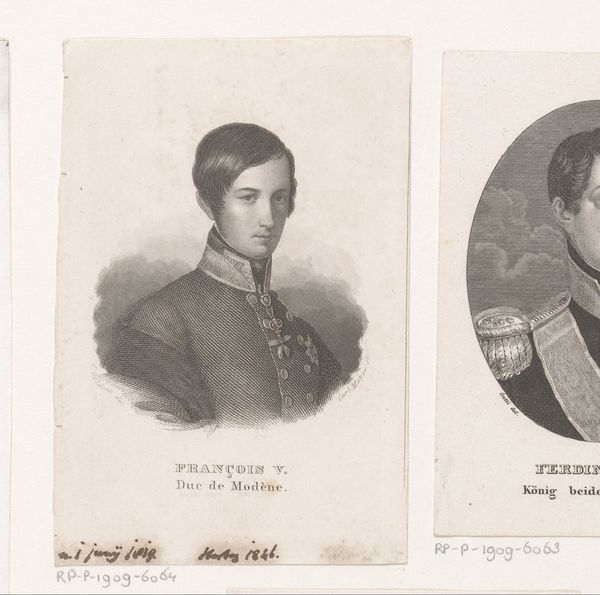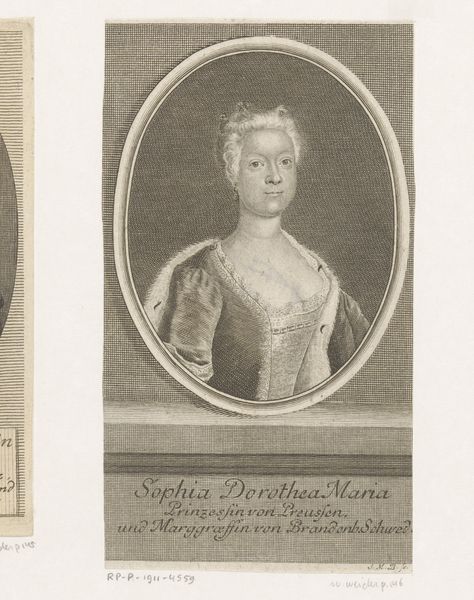
Portret van Friedrich VI, koning van Denemarken 1797 - 1886
0:00
0:00
friedrichleonhardlehmann
Rijksmuseum
print, engraving
#
portrait
#
neoclacissism
# print
#
classical-realism
#
line
#
history-painting
#
engraving
Dimensions: height 103 mm, width 62 mm
Copyright: Rijks Museum: Open Domain
Editor: Here we have a print entitled "Portret van Friedrich VI, koning van Denemarken," dating from 1797 to 1886, created by Friedrich Leonhard Lehmann. It’s a delicate engraving, almost neoclassical in its simplicity. What strikes you most about its composition? Curator: The starkness of line is particularly compelling. Note how the artist relies almost exclusively on hatching and cross-hatching to delineate form and volume. Observe also the rigorous adherence to symmetry within the oval frame, establishing a powerful sense of order. There's a conscious suppression of painterly effects, steering clear of any sentimental effusion. How would you say the lack of color informs our reading of the image? Editor: It does lend the piece a sense of formality and seriousness, directing the viewer's attention to the details of the line work itself and the subtle modeling of the King's face and his garments. But does that level of detailed execution and finish bring a level of artificiality to the image? Curator: Indeed. It is tempting to read into the meticulousness with which his military regalia and, correspondingly, hers is rendered, thus functioning almost like a code. However, from a Formalist position, we focus on what the print communicates purely through its intrinsic visual elements. Consider the texture achieved through the engraving technique—how does it shape the perception of the subjects portrayed? Editor: It's a controlled texture. Everything feels very deliberate, creating a sense of distance between the viewer and the subject. Almost like looking at a carefully constructed ideal, rather than a likeness. Curator: Precisely. This echoes the neoclassical ideal, which often prioritized universal forms over individual expression. It prompts one to think about the image's status not merely as a depiction, but as an aesthetic object, revealing its deeper formal logic and internal relationships. Editor: I hadn't considered that interplay so explicitly before! Focusing on form helps unlock new avenues for interpretation.
Comments
No comments
Be the first to comment and join the conversation on the ultimate creative platform.
